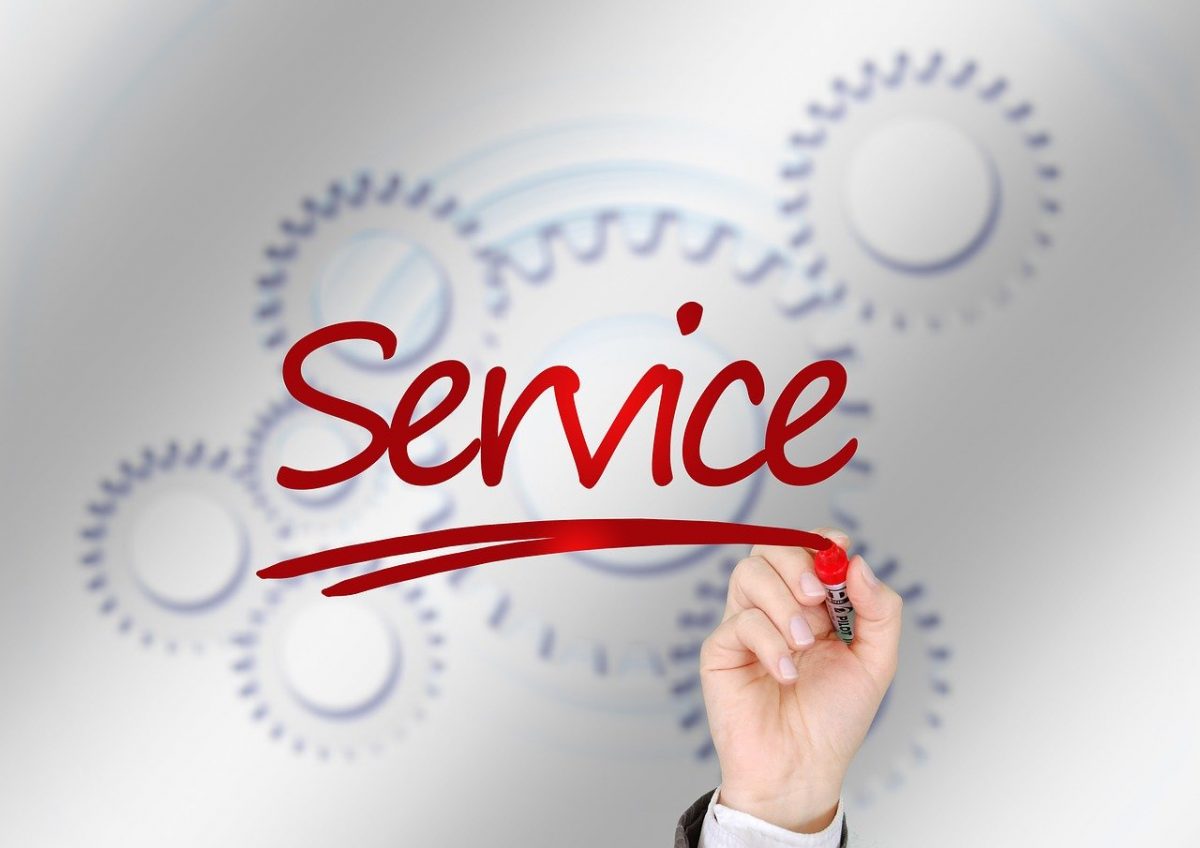
One day, I put my sunglasses on and found an ugly scratch on the lens. Since it was Friday Day, I thought it was a signal to buy a new pair. Determining that it would be cheaper to shop online, I went to Amazon and bought a classy pair of flyers in preparation for my next road trip.
You can probably relate to this story. If not, you are the only one in 10 consumers who does not check the price of items on Amazon before making a purchase. The rest of us rely on the site's competitive pricing and reliable customer service to guide our purchasing decisions. Due to this painless customer experience, we have chosen Amazon as our preferred e-commerce site by default.
Amazon has created a service model that aligns with the needs of its e-commerce customers - for example, perhaps you have spoken with an Amazon support representative on the phone or in online chat.
Customer service in e-commerce
In this article, we will explain what e-commerce customer service is and provide you with some of the best practices you can use to improve it on your website. Then we will provide a list of ecommerce service tools that you can adopt for your business.
E-commerce customer service refers to the services that are provided to online shoppers. If your visitors have questions or need help making a purchase, these features help them navigate your site and achieve their goals. E-commerce customer service enables representatives to meet customers wherever they are to make the support process simple and efficient.
Contributions in the application of this service

The eCommerce service approach differs slightly from brick and mortar settings. Since representatives can only call or chat, it is necessary to anticipate the obstacles that users will experience during the purchase process.
That requires you to consistently get customer feedback and analyze it for common user pain points. Once you understand these variables, you can install self-service and proactive features that guide visitors through the customer journey.
If you are looking to improve service in your online store, take a look at the following section to learn about some of the best practices we have collected for ecommerce customer service.
Ecommerce Customer Service Best Practices
Providing excellent customer service in an e-commerce environment can be challenging for some businesses. That's because it can be difficult to engage with customers when you're not interacting face-to-face. The tips in this section can help you overcome these obstacles and delight your online store visitors.
Focus on your average response time. In this sense, there is no doubt that in the end customers enjoy online shopping because it is efficient and convenient. They can easily compare product prices and order items right at their doorstep. However, when customers have questions, they expect it to be answered effortlessly. They don't want to wait for answers when they come to your site for a quick purchase.
This is why it is important to focus on average response times when working with ecommerce clients. If visitors approach, reps must respond in seconds. Tools like live chat and chat bots can improve your average response time and streamline the support process for your users. By reducing the time it takes to get a response, customers are less likely to be distracted and drift away from your site.
Use social media for customer service
With speed and efficiency our main objective, social media becomes a valuable asset as a channel for customer service. Customers can use social media to report problems or ask questions, immediately notifying your service team.
Then your reps can address the issue and recontact and update all of your customers at once. Rather than funneling inquiries through one communication channel, this ubiquitous channel experience makes it easy for online shoppers to connect with your customer service team.
Provide proactive customer support.
When customers browse your website, they may not be aware of your support and service features. They may have questions, but they have no idea where to go to ask. Or they might decide that it's too much work to contact support and move on to the competition. Even if your site offers service features, it is important to proactively share them with your customer base.
You can implement proactive customer service by creating CTAs on your website. Make it clear where users can submit their support inquiries and provide frequently asked questions about what they can expect from your service team. If you have a live chat, create a pop-up that draws the visitor's attention to the chat widget. This will encourage visitors to use your assistance features, creating opportunities to attract and delight customers.
Include self-service options for customers
Another efficient way to provide feedback to customers is to use customer self-service features. These are tools that customers use to find solutions to their problems without the help of a service representative. When clients have quick or fundamental questions, this saves them time from having to open a formal inquiry.
An example of self-service is a knowledge base. A knowledge base is a section of your website that contains service and support documents. These resources discuss common customer obstacles that users experience every day. Customers can review these references before contacting their service team.
Offer a phone support line
Some customers don't have the patience to check out support options online. Speed and efficiency are key in ecommerce environments and non-tech savvy customers aren't interested in browsing your site for answers.
If possible, provide these users with a direct line to your service team by providing telephone support. Even if you don't have call center software or designated phone equipment, having an immediate way to create a live interaction can dramatically improve the customer experience.
Take advantage of customer service tools

No matter how big your business is, customer service tools can have a significant impact on your e-commerce website. These tools automate support functions and expand the bandwidth of your customer service team.
For example, a ticketing system can manage and distribute incoming customer inquiries so that reps know exactly what to work on and no cases are overlooked.
Ecommerce customer service software
If you are looking to adopt tools like these for your website, check out the list below of the best ecommerce customer service software.
HubSpot
The HubSpot Service Center is great for eCommerce businesses for a number of reasons, including its integration with Shopify. You can sync your Shopify store customers with your HubSpot CRM, and then engage visitors when they take action on your site.
Also, Service Hub has free live chat and chatbot tools. You can easily install these features on your website to offer your customers immediate assistance.
Kayak
Kayako is helper software that includes specific features for e-commerce. For example, it has Facebook and Twitter tools that help service representatives handle social media inquiries. There is also a shared inbox feature that centralizes incoming requests in one location. That way, reps can easily keep track of all customer interactions through one universal interface.
clickdesk
Clickdesk is another service platform that can be used for e-commerce. Its most notable feature is its video chat tool that allows clients to work directly with representatives.
So if a conversation seems to be going nowhere, your team can enter into a video chat to clear up any communication problems. That is a huge advantage for SaaS businesses that have to explain highly technical or complex solutions.
Get Satisfaction
Get Satisfaction focuses its product on the idea of creating a community of service. He believes that self-service options, such as community forums, are the best way to provide customers with immediate responses.
Using its gaming features, you can create a community page that encourages customers to help each other solve problems. Supplementing this forum with your other support features should create a more satisfying service experience.
Acquire has a chatbot that can answer up to 80% of customer questions, instantly. Use machine learning to interpret the questions and then provide users with the most relevant solution. You can also import knowledge base FAQs, snippets, and documents into the bot to enhance your customization. And, as the bot collects more customer data, it improves over time.
Arrival of new technologies
With the advent of digital technologies and the evolution of electronic commerce, the concept of purchase has evolved a lot in terms of consumer purchasing patterns to customer expectations. Customer support has also evolved from reactive channels to omni-corporate channel support to deliver a more consistent e-commerce customer service experience.
Modern retail is expected to see a substantial increase from 19% to 24% over the next three years, driven largely by omnichannel retail.
As technology continues to change, so do business practices and go-to-market strategy. When it comes to customer service these days, ecommerce businesses are expected to deliver the highest quality experience or risk losing customers to competitors forever.
So how should you build your ecommerce customer service strategy? What is e-commerce customer service? Well, e-commerce customer service or e-commerce customer support is about providing a great customer service experience to your online store or e-commerce business.
Every e-commerce or retail business, whether small or large, needs to invest in providing excellent customer service through the channels their customers prefer via live chat, call center, or social channels.
There are some best practices to consider in building your eCommerce customer service. Where there is no doubt that the best eCommerce customer service is to meet customer expectations and give them a WOW experience. Offering great customer service with your ecommerce business can do wonders in making your brand stand out from the competition. Let's talk about ecommerce customer support ideas that you should implement.
Develop an omni channel strategy
For today's e-commerce businesses, having one or two communication channels is not enough. Customers expect your presence through their preferred channels like website, social media, email, phone, etc.
So what should I do? One way is to take an omni channel approach. What is the omni channel strategy? The omni channel strategy unifies all points of contact with the customer throughout the life cycle of the same under a single platform, to attract them throughout their buying journey and offer them a consistent experience. 73% of customers use multiple channels during their shopping journey.
To build an all-encompassing channel customer support strategy, you need to focus on three basic elements to make the customer experience as non-confrontational as possible.
Identify the contact points preferred by your customers
Understand your customers' journey and create a strategy to engage them through those touchpoints
Deliver a consistent experience throughout your customer's journey
The legacy of the omni channel is to harness the power of digital channels to streamline and optimize the shopping experience for customers and their relationships with brands. With the right channel strategies, you can configure your brand for longevity and stability in this changing environment.
Provide proactive customer support
83% of customers need help completing an online purchase. And 70% of sales depend on how they feel treated by a brand.
And it is an obvious fact that customers will stop coming back to your business if you give them unsatisfactory service. It occurs mostly if a business focuses on a reactive approach. However, good customer service is about anticipating problems and solving them before they escalate - proactive customer support.
Proactive support is one of the best ways to improve your customer service experience. Reduce support interactions and build customer trust that improves retention. It allows you to reach your customers and make your entire trip a beautiful experience. Online businesses need to follow certain strategies to make their service proactive.
Best Practices for Proactive Ecommerce Customer Service:
Make your customers aware of problems before they know it. For example, delayed shipment, out of stock for order fulfillment, late pickup, etc. Communicate issues to customers when they become aware of them before customers know it and escalate online.
Never lose track of your customers. Set up an automatic email to ask a customer if they are happy with the product or email them later after purchase.
Monitor your social conversations because customers today jump to social media to express their opinions about your brand's service experience.
Identify the most common customer issues that can be easily fixed to reduce the number of support calls and improve customer satisfaction.
The article is good as long as you have a high-volume ecommerce
That they are really few and that few already know all the media for customer service.
There is the counterpart that are SMEs and I think that by using these channels at first it generates an expense and training in the use of tools that at the moment is not appropriate. It is enough to have social networks and direct chat via what's or mezenger or mail and / or tel to give personalized attention and begin to have a loyalty to the brand